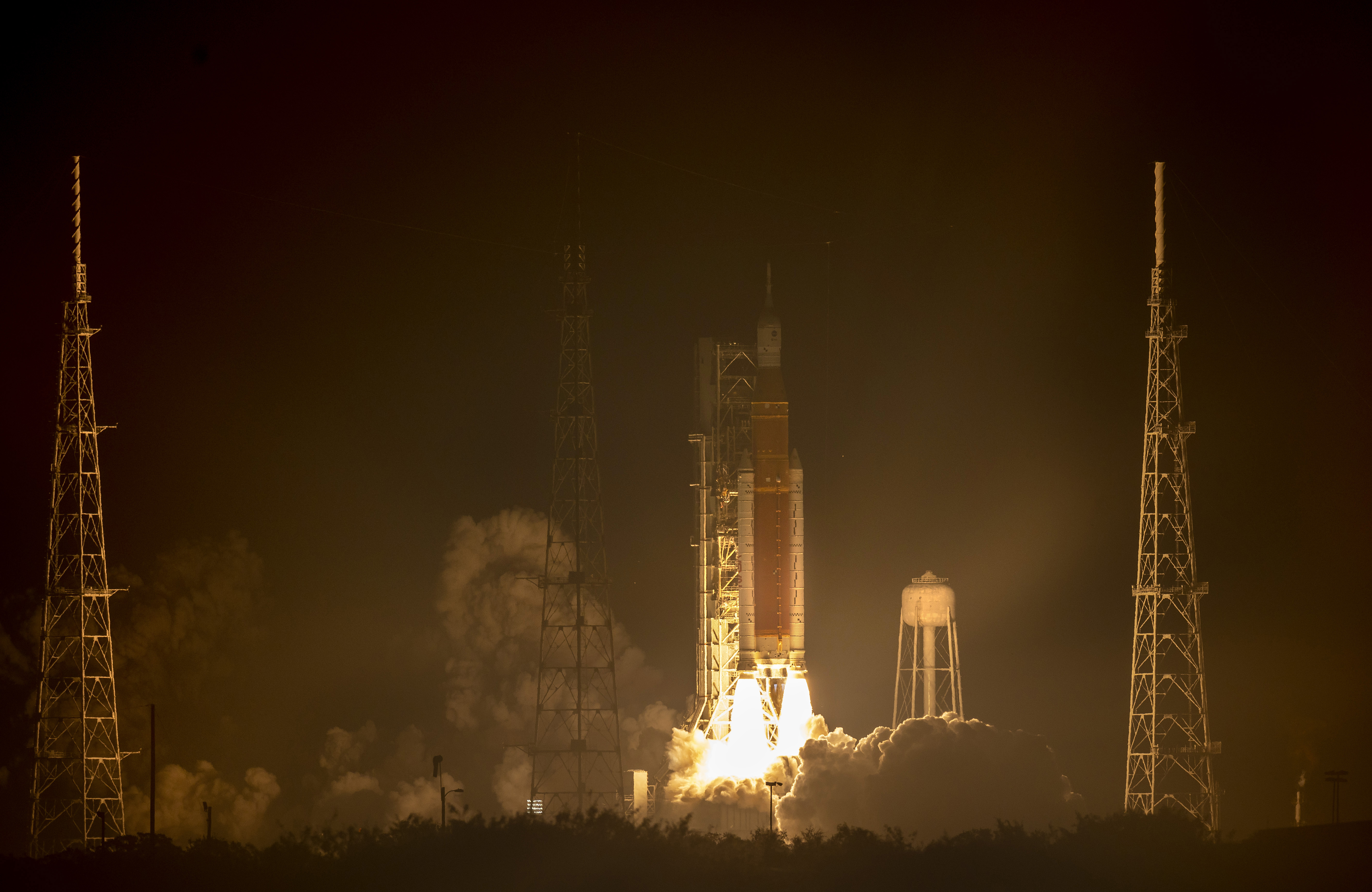Editor’s Note: This story was updated Nov. 15, 2022.
In 1962, President John F. Kennedy told a crowded stadium at Rice University that the U.S. would lead the charge of landing a man on the moon by the end of the decade, arguing that no single space project was "more important for the long-range exploration of space."
The Apollo program, which ended in 1972 with Apollo 17 when astronauts Gene Cernan and Harrison Schmitt became the last humans to set foot on the lunar surface, yielded innumerable scientific insights that continue today to provide valuable information about our planet and the cosmos.
Over half a century later, the National Aeronautics and Space Administration is set to launch the most powerful rocket in the world for a new space venture that is even more awe-inspiring.
Get top local stories in Philly delivered to you every morning. Sign up for NBC Philadelphia's News Headlines newsletter.
The Artemis missions will not only put the first woman and first person of color on the lunar surface, but will pave the way for a sustained presence on the moon and, eventually, human exploration to Mars and beyond.
Here's everything to know about the Artemis program, the lunar missions and what's next for NASA:
WHAT IS THE ARTEMIS PROGRAM?
Artemis is NASA's program to return astronauts to the surface of the moon.
The lunar exploration campaign will start with the uncrewed Artemis I mission and its plan to take an Orion capsule on a four-to-six-week journey to the moon and back. Artemis II will do the same with astronauts on board, then Artemis III will put two astronauts on the surface of the moon sometime after 2024.
"And by Artemis IV, the hope is higher heights," NASA Administrator Bill Nelson said at an Aug. 3 news conference discussing the upcoming Artemis I mission.
The "Moon to Mars" plan involves establishing a new space station in lunar orbit and, eventually, a habitable Artemis base camp on the surface of the moon's south pole. These structures will help support more discovery and exploration of the solar system, according to NASA.
While the Artemis space missions are mainly focused on lunar exploration, NASA's long-term goals are even more ambitious. Using the technology and research developed during the Artemis space flights, NASA intends to make the next giant leap for mankind: sending astronauts on a mission to Mars.
WHY ARE WE GOING BACK TO THE MOON?
NASA hasn't launched a rocket designed for deep space since NASA’s Apollo moonshots more than a half-century ago. In returning to the moon, the agency will be able to test the strength and endurance of its latest technologies, including its next-generation spacesuits, the Space Launch System (SLS) rocket and Orion capsule, for subsequent visits.
Exploring the lunar surface will help NASA learn more about the sun, our planet and the solar system, and how humans can survive and thrive in a partial gravity environment — information that will then be used to develop equipment for a sustained presence on and around the moon. This includes life support and communications systems in order to deploy astronauts to the moon for extended stays.
This infrastructure will eventually be used as an outpost to resupply and refuel deep space exploration to the Red Planet and beyond.
WHY IS THE PROGRAM FROM NASA NAMED ARTEMIS?
Artemis is the mythological Greek goddess of the moon and Apollo's twin sister. Apollo is also the namesake the space agency's third lunar program, which ran from 1968 to 1972, and landed the first humans on the moon five decades ago.
HOW WILL ARTEMIS 1 GET US TO THE MOON? PURE ROCKET POWER
Artemis I is the first mission for NASA’s moon-focused Space Launch System (SLS) rocket. Standing 322 feet tall, it promises to be the biggest, most powerful rocket in the world, using a core stage and twin strap-on boosters loaded with nearly 1 million gallons of super-cold liquid hydrogen and oxygen to help launch the Orion capsule farther than any spacecraft built for humans has ever flown, according to NASA.
The boosters, packing 8.8 million pounds of thrust, will peel away after two minutes while the core stage will keep firing before separating and crashing into the Pacific ocean. Two hours after liftoff, an upper stage will send the Orion crew capsule racing toward the moon.
No one will be inside Orion — named after the constellation, among the night sky’s brightest — atop the rocket for the lunar test flight, just three full-size mannequins swarming with sensors to measure cosmic radiation and vibration.
The capsule will use the moon's gravitational pull to fly around its lunar orbit for a couple weeks, before getting flung on a trajectory back toward Earth for a splashdown in the Pacific Ocean. The reentry will pose the biggest test for the mission as Orion rips through the Earth's atmosphere at 25,000 mph and aims to withstand temperatures of 5,000 degrees Fahrenheit.
The entire flight should last six weeks.

The flight will test our capabilities to orbit the Moon and return to Earth safely. If the trip goes well, astronauts could climb aboard in 2023 for a lunar loop-around and actually land by 2025.
“We’re going to stress it and test it. We’re going make it do things that we would never do with a crew on it in order to try to make it as safe as possible,” Nelson said.
WHEN WILL ARTEMIS 1 LAUNCH?
NASA was aiming for an Aug. 29 liftoff for the lunar test flight out of the Kennedy Space Center in Cape Canaveral, Florida. However, an engine bleed issue forced the agency to scrub the launch. A second launch was also scrapped. The newest window opens at 1:07 a.m. ET on Nov. 16. Get full details of how to watch the launch here.
More Artemis I Coverage:
The Associated Press contributed to this report.



